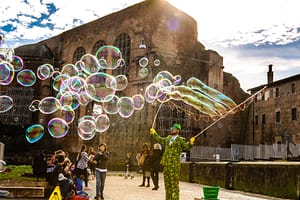LANGUAGE
Italian
CURRENCY
Euro
BEST TIME TO VISIT
October to April
NEAREST RAILWAY STATION
Termini Station
NEAREST AIRPORT
Ciampino – G.B. Pastine International Airport
EMERGENCY HELPLINE NUMBER
112
INTERNET ACCESS
Free Wi-Fi is widely available in hostels, B&Bs and hotels, though with signals of varying quality. Some also provide laptops/computers. Many bars and cafes offer wi-fi.
There are many public wi-fi hotspots across town run by Roma Wireless (https://captivik.uni.it/romawireless) and WiFimetropolitano (www.cittametropolitanaroma.gov.it/wifimetropolitano). To use these you’ll need to register online using a credit card or an Italian mobile phone.
VISA
Not required by EU citizens. Not required by nationals of Australia, Canada, New Zealand and the USA for stays of up to 90 days.
Italy is one of the 26 European countries making up the Schengen area. There are no customs controls when travelling between Schengen countries, so the visa rules that apply to Italy apply to all Schengen countries. EU citizens do not need a visa to enter Italy – a valid ID card or passport is sufficient.
Nationals of some other countries, including Australia, Canada, Israel, Japan, New Zealand, Switzerland and the USA, do not need a visa for stays of up to 90 days. Nationals of other countries will need a Schengen tourist visa – to check requirements see www.schengenvisainfo.com/tourist-schengen-visa.
All non-EU and non-Schengen nationals entering Italy for more than 90 days or for any reason other than tourism (such as study or work) may need a specific visa. Check http://vistoperitalia.esteri.it for details.
Permesso di Soggiorno
A permesso di soggiorno (permit to stay, also referred to as a residence permit) is required by all non-EU nationals who stay in Italy longer than three months. In theory, you should apply for one within eight days of arriving in Italy.
EU citizens do not require a permesso di soggiorno but are required to register with the local registry office (ufficio anagrafe) if they stay for more than three months.
HOTEL
For a city as large as Rome, the top tourist attractions are relatively close together, so several neighborhoods are convenient for sightseeing. And although the sights are not actually clustered, they do fall into groups. The ancient Roman highlights – the Colosseum, Roman Forum, and Palatine Hill – are close together and within walking distance of the Pantheon. It, in turn, is close to Piazza Navona and the charming Campo de’ Fiori neighborhood. To the northeast, and still within walking distance, are the Spanish Steps and Borghese Gardens, with the Trevi Fountain a short detour on the way. Across the Tiber are the sights of Vatican City and the atmospheric streets of Trastevere.
You’ll find several choices of hotels in each of these popular areas, some so close that their balconies and rooftop terraces overlook major attractions. But other neighborhoods to consider are those only a few blocks away from these centers. The Monti neighborhood, for example, is near the Colosseum and handy to the main Termini rail station in Rome and the Baths of Diocletian. Often these slightly out-of-the-way streets are filled with restaurants that locals enjoy – and tourists usually miss.
LUXURY
Baglioni Hotel Regina
J.K. Place Roma
Palazzo Manfredi – Relais & Chateaux
The Inn at the Roman Forum
MID-RANGE
Hotel Alimandi Vaticano
iQ Hotel Roma
Bettoja Hotel Mediterraneo
Bettoja Massimo D’Azeglio Hotel
BUDGET
Hotel Artorius
Hotel De Monti
Cassiodoro
A.Roma Lifestyle Hotel
COST OF LIVING
Rome is one of those must-visit cities and the Italians know it so things tend to be more expensive than you might expect. Hotels in particular are strangely pricey for this part of Europe, though some cheaper options are available in the slightly seedy area near the Termini train station. There are plenty of hostels so finding a bed is rarely a problem, especially if you book in advance.
The attractions in Rome are quite reasonable and many of them are actually free, so this isn’t a city that will cost a fortune every time you want to go see something. The few famous ones that do charge are well worth it anyway. Food and drinks in Rome can be tricky. The main hotel areas in the city are jammed with places well located for tourists, with English menus out front. These places tend to be noticeably more expensive than their more-local counterparts, so one of the tricks for saving money is to get away from the tourist districts and explore the local neighbourhoods a bit.
Hotels in Rome are at their most crowded and expensive from June through August, which is yet another reason to aim for the cooler and more pleasant spring or autumn if you can pull it off. Even though many Rome residents clear out of the city in July and August, the influx of tourists more than makes up for it, so book well in advance if you have a special place in mind.
The low season in Rome is from December through February, except for the winter holidays around New Year. Especially if you are coming in off season it tends to be a buyer’s market so finding a hotel once you arrive shouldn’t be a problem. But even if spring and autumn the cheaper and more popular places can become fully booked in advance so a reservation is a good idea. Hotels in Rome tend to be more expensive than one might think, so locking in a bargain is a good idea if you find one.

